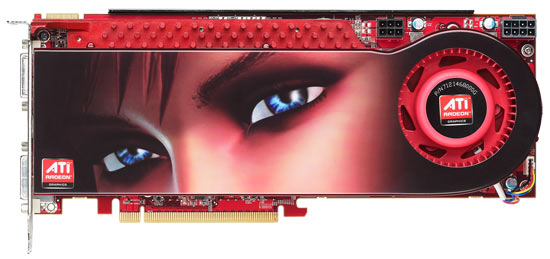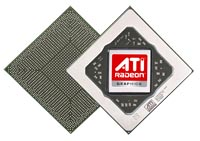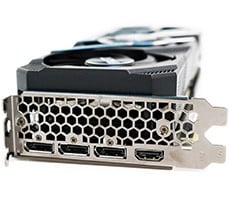
A few short weeks ago, AMD unleashed the dual-GPU powered ATI Radeon HD 3870 X2, which marked the company’s re-entry into the ultra high-end desktop graphics card space that had been dominated by NVIDIA since the introduction of the GeForce 8800 series. As we mentioned in our launch coverage, the Radeon HD 3870 X2 utilizes a pair of R670 graphics processors working together on a single PCB, for what is essentially a single-card CrossFire configuration.
AMD’s reference design called for two R670 GPUs clocked at 825MHz with 1GB (512MB per GPU) of 900MHz frame buffer memory. Leading up to the launch, representative from AMD had mentioned, however, that some of their board partners were likely to releases X2 cards that differed from the reference design. With that in mind, we were eager to get our hands on some retail-ready Radeon HD 3870 X2 cards to truly see what AMD’s board partners had in store.
In this article, we’ll be taking a look at three Radeon HD 3870 X2 cards, two from Asus and one from HIS. A pair of the cards are much like AMD’s reference design, but one of them is hardly recognizable as a Radeon HD 3870 X2 – at least not at first glance.

ATI Radeon HD 3870 X2 Reference Design
|

|
| ATI Radeon HD 3870 X2 |
| Features & Specifications | |
| 666 million transistors on 55nm fabrication process (x2)
256bit 8-channel GDDR3/4 memory interface (x2)
Ring Bus Memory Controller
- Fully distributed design with 512-bit internal ring bus for memory reads and writes
- Optimized for high performance HDR (High Dynamic Range) rendering at high display resolutions
Unified Superscalar Shader Architecture
- 320 stream processing units (x2)
- Dynamic load balancing and resource allocation for vertex, geometry, and pixel shaders
- Common instruction set and texture unit access supported for all types of shaders
- Dedicated branch execution units and texture address processors
- 128-bit floating point precision for all operations
- Command processor for reduced CPU overhead
- Shader instruction and constant caches
- Up to 80 texture fetches per clock cycle
- Up to 128 textures per pixel
- Fully associative multi-level texture cache design
- DXTC and 3Dc+ texture compression
- High resolution texture support (up to 8192 x 8192)
- Fully associative texture Z/stencil cache designs
- Double-sided hierarchical Z/stencil buffer
- Early Z test, Re-Z, Z Range optimization, and Fast Z Clear
- Lossless Z & stencil compression (up to 128:1)
- Lossless color compression (up to 8:1)
- 8 render targets (MRTs) with anti-aliasing support
- Physics processing support
Full support for Microsoft DirectX 10 / 10.1
- Shader Model 4.0
- Geometry Shaders
- Stream Output
- Integer and Bitwise Operations
- Alpha to Coverage
- Constant Buffers
- State Objects
- Texture Arrays
Dynamic Geometry Acceleration
- High performance vertex cache
- Programmable tessellation unit
- Accelerated geometry shader path for geometry amplification
- Memory read/write cache for improved stream output performance
Anti-aliasing features
- Multi-sample anti-aliasing (up to 8 samples per pixel)
- Up to 24x Custom Filter Anti-Aliasing (CFAA) for improved quality
- Adaptive super-sampling and multi-sampling
- Temporal anti-aliasing
- Gamma correct
- Super AA (CrossFire configurations only)
- All anti-aliasing features compatible with HDR rendering
CrossFire Multi-GPU Technology
- Scale up rendering performance and image quality with 2 or more GPUs
- Integrated compositing engine
- High performance dual channel interconnect
|
Texture filtering features
- 2x/4x/8x/16x high quality adaptive anisotropic filtering modes (up to 128 taps per pixel)
- 128-bit floating point HDR texture filtering
- Bicubic filtering
- sRGB filtering (gamma/degamma)
- Percentage Closer Filtering (PCF)
- Depth & stencil texture (DST) format support
- Shared exponent HDR (RGBE 9:9:9:5) texture format support
ATI Avivo HD Video and Display Platform
- Two independent display controllers
- Drive two displays simultaneously with independent resolutions, refresh rates, color controls and video overlays for each display
- Full 30-bit display processing
- Programmable piecewise linear gamma correction, color correction, and color space conversion
- Spatial/temporal dithering provides 30-bit color quality on 24-bit and 18-bit displays
- High quality pre- and post-scaling engines, with underscan support for all display outputs
- Content-adaptive de-flicker filtering for interlaced displays
- Fast, glitch-free mode switching
- Hardware cursor
- Two integrated dual-link DVI display outputs
- Each supports 18-, 24-, and 30-bit digital displays at all resolutions up to 1920x1200 (single-link DVI) or 2560x1600 (dual-link DVI)
- Each includes a dual-link HDCP encoder with on-chip key storage for high resolution playback of protected content
- Two integrated 400 MHz 30-bit RAMDACs
- Each supports analog displays connected by VGA at all resolutions up to 2048x1536
- HDMI output support
- Supports all display resolutions up to 1920x1080
- Integrated HD audio controller with multi-channel (5.1) AC3 support, enabling a plug-and-play cable-less audio solution
- Integrated Xilleon HDTV encoder
- Provides high quality analog TV output (component / S-video / composite)
- Supports SDTV and HDTV resolutions
- Underscan and overscan compensation
- HD decode for H.264/AVC, VC-1, DivX and MPEG-2 video formats
- Flawless DVD, HD DVD, and Blu-Ray playback
- Motion compensation and IDCT (Inverse Discrete Cosine Transformation)
- HD video processing
- Advanced vector adaptive per-pixel de-interlacing
- De-blocking and noise reduction filtering
- Edge enhancement
- Inverse telecine (2:2 and 3:2 pull-down correction)
- Bad edit correction
- High fidelity gamma correction, color correction, color space conversion, and scaling
- MPEG-2, MPEG-4, DivX, WMV9, VC-1, and H.264/AVC encoding and transcoding
- Seamless integration of pixel shaders with video in real time
- VGA mode support on all display outputs
PCI Express 2.0 x16 bus interface
OpenGL 2.0 support

|
Above are the complete specifications and feature-set of the Radeon HD 3870 X2. Due to the fact that we’ve already covered the underlying technology employed in the R670 GPUs powering the X2, and have already detailed the reference card’s features and performance, we’re not going to rehash those details again here. If you’re unfamiliar with the Radeon HD 3870 X2, however, and would like more details we suggest checking out a couple of our recent articles. In our Radeon HD 3870 and 3850 coverage, we discuss the R670 GPU in depth. And in our Radeon HD 3870 X2 launch article, we cover the card’s main features and inner workings. If you check out those two pieces, they’ll get you up to speed.








